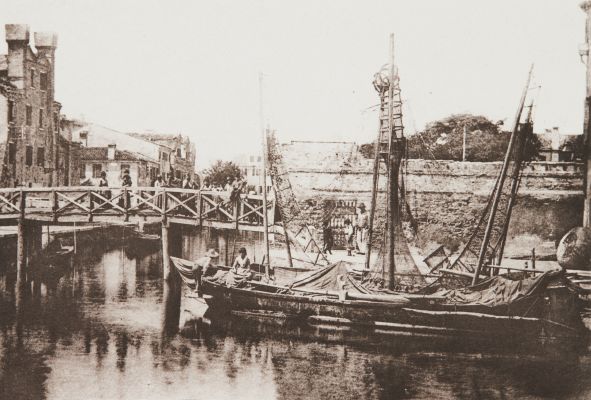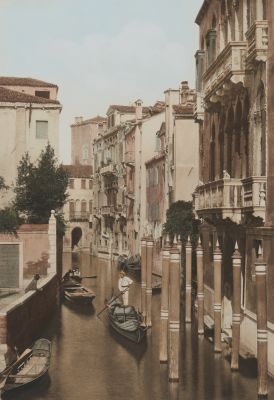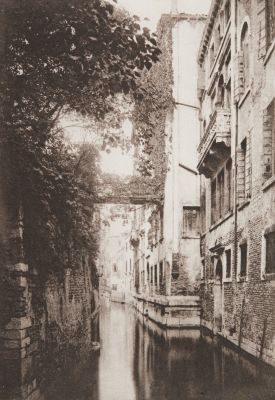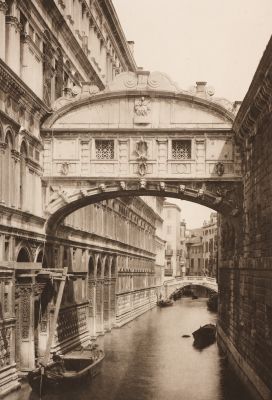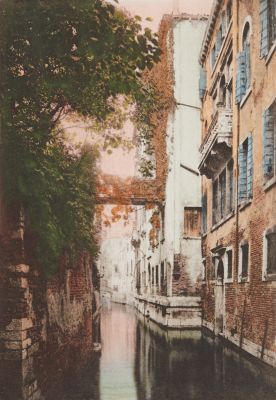
Title
Plate 47Artist
Ongania, Ferd. (Italian, 1842-1911)Publication
Calli E Canali in VeneziaDate
1899Process
PhotogravureImage Size
23.4 x 34.2 cm
Ferdinando Ongania bought his shop in the Napoleonic wing of St. Mark’s Square from the firm of H.F. and M. Münster in January 1871. The antiquarian bookseller supplied a prestigious clientele, including such scholars and bibliophiles as John Ruskin and J.P. Morgan; but his own personal tribute to Venice was the printing of works of amazing quality and the reprinting in deluxe editions of such masterpieces as the Grimani breviary, and Etchings by Tiepolo. It is in this environment that Ongania published Calli e Canali in Venezia, Alleys and Canals in Venice, a series of 200 photographs of late-nineteenth century Venice, reproduced in beautiful photogravure and contained in two portfolios. Calli e Canali in Venezia is the last testimony to a Venice that no longer exists, one overflowing with life at every corner, with waterscapes silently crossed by gondolas and rowing-boats. A splendid but sober Venice, one as yet untouched by tourism and the industrial experiments of the twentieth century. Printed in multiple editions, versions and formats, beginning in 1890 it was issued in 20 parts (2 volumes), in printed paper wrappers and later (1891 and 1893) it was released as a two volume bound set with 100 photogravure plates. In 1895 and 1896 it was released in New York by Appleton and again in a smaller format.

